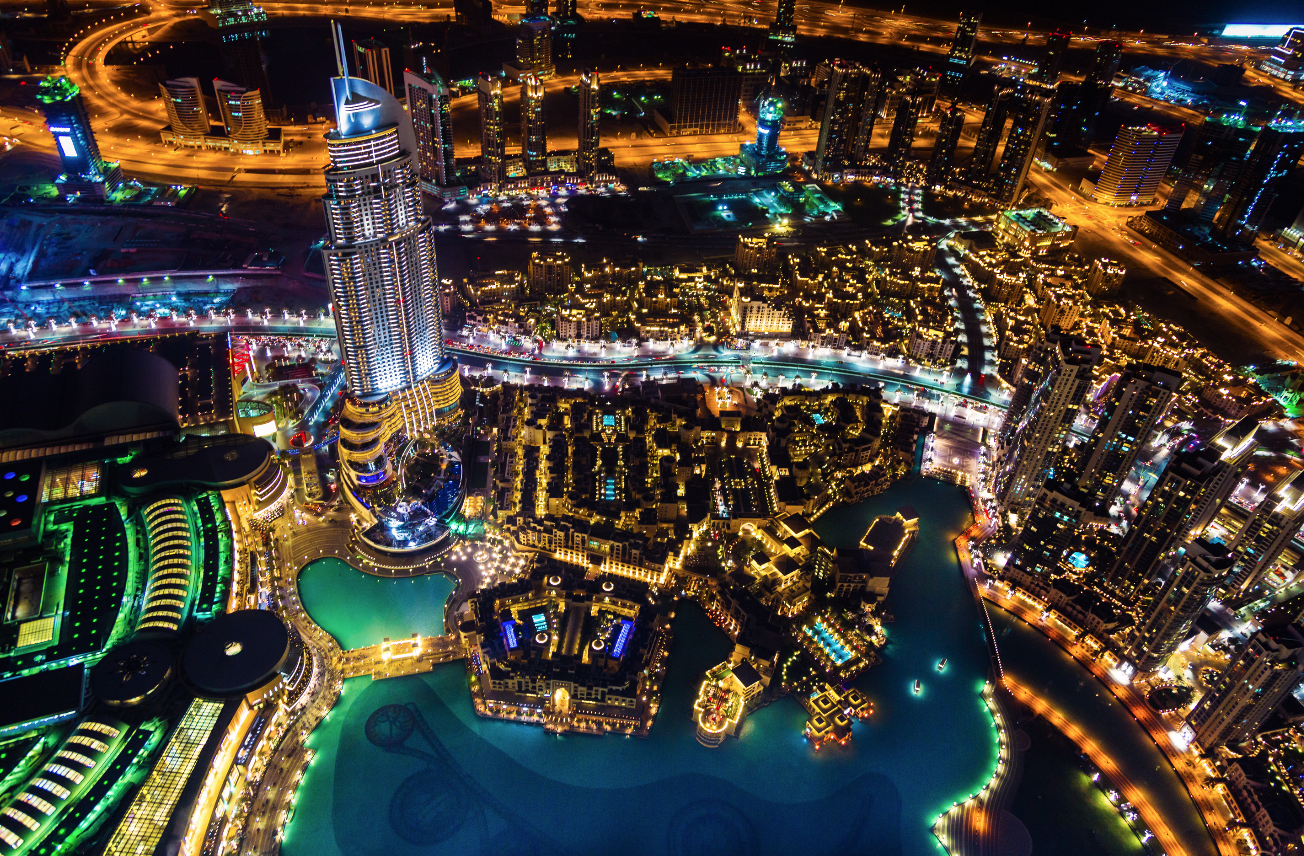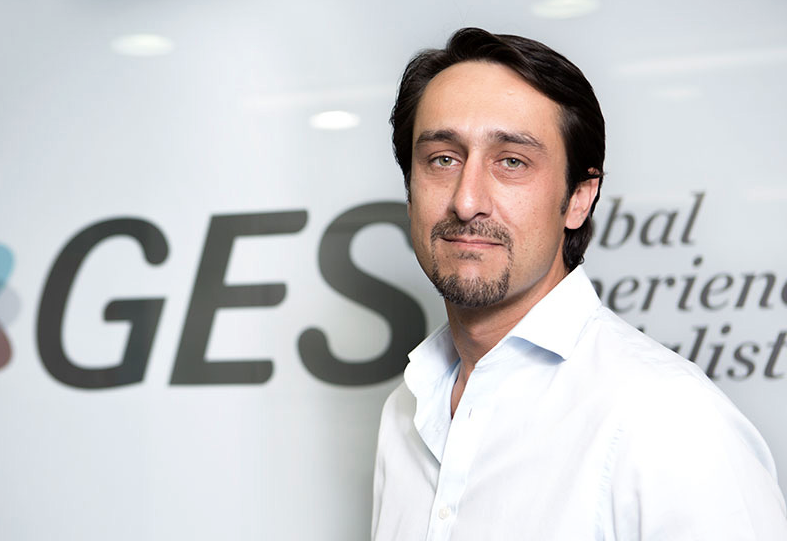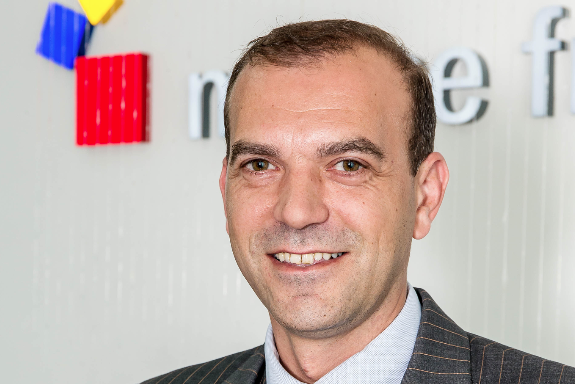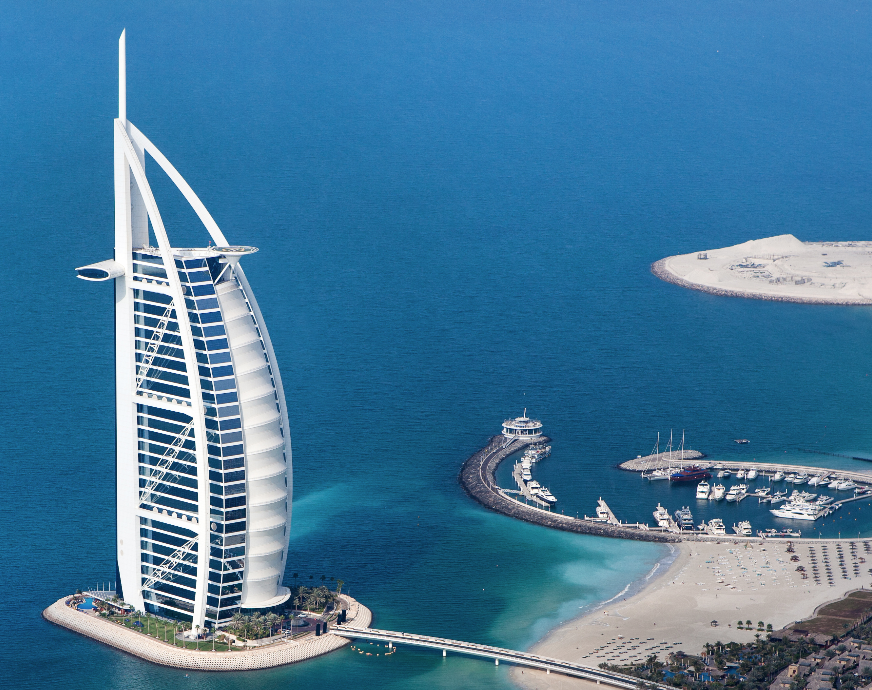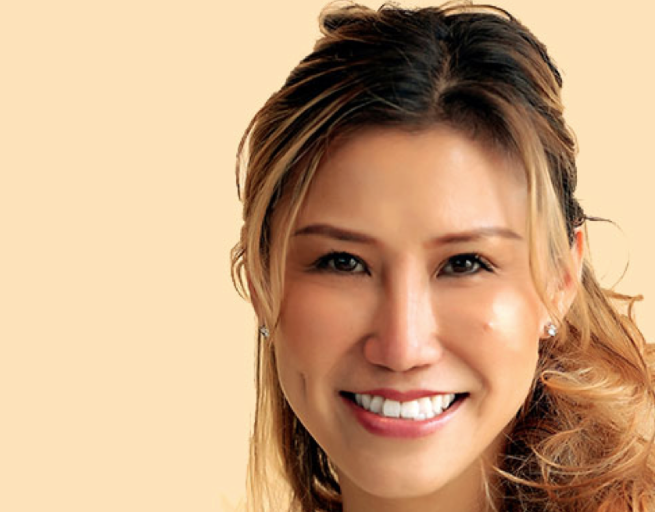Stepping out of The Dubai Mall, with its 10 million-litre aquarium, oil millionaires enthusiastically rev their Lamborginis as crowds gather in front of a lavish fountain display, all overlooked by the world’s tallest building.
It’s a scene that encapsulates the UAE’s obsession with glamour, spectacle and wealth, but it’s also a transient moment: The 828m Burj Kahlifa tower will be eclipsed in 2020 by an even taller rival, the nearby Jeddah Tower.
The glitterati’s preferred mode of transport, meanwhile, looks set to diversify from sports cars to drone taxis and a Hyperloop train, if Sheikh Mohammed bin Rashid, the VP and ruler of Dubai, achieves his vision. And he usually does.
Such relentless innovation is cheered on in the UAE, and the exhibition market has followed suit, with dramatic changes in the past decade.
Before service provider GES entered the market in 2007, Dubai events were traditionally run with manual processes and even faxes. There were no call centres or digitised ticketing systems. Instead, queues outside venues were commonplace, and build quality and health and safety standards left much to be desired.
“There were exhibition service providers using cabinets with paper files, and digitisation was in its infancy,” GES Middle East managing director Yasser Al Maaytah tells EW, as we sip tea in its satellite office – part of the 122,000sqm Dubai World Trade Center (DWTC).
“The plan GES undertook in the Middle East involved scaling up what we do, investing in new equipment and partnering with companies to improve service delivery,” he adds.
When Al Maaytah joined GES from dmg in 2009, the company was beginning its Middle Eastern ascent, which would reach a tipping point around 2014, when the company reached the scale necessary to streamline its delivery. Indeed, since 2014, GES has doubled the number of shows it works on in the UAE to around 90.
“Our purchasing power tipped roughly after show number 50. There are only 130 established shows in the UAE and we now work on more than 90 of these,” Al Maaytah says. “We adopted the model provided by the GES mothership in the UK and US, and we tweaked it to suit the region.”
In Dubai, GES now works on blue chip shows including Dubai Air Show and Gulfood, and with major organisers including Tarsus, Reed and Informa – a company that is also expanding in the UAE.
Speaking to EW from Dubai, Informa’s managing director Peter Hall says a series of acquisitions have cemented the organiser’s presence in the region, but economic fluctuations have made the business climate more challenging.
“We’ve become adept at running a business here, with great people who know what they’re doing but we’re always learning. The challenges have been running a business in tough times, with oil prices down and budgets being cut. It’s forcing us to be smarter about how we respond to customer needs.
“If you ran the clock back five years, this region was rocking, and you could focus on selling, but now it’s more focused on quality of attendee. Major venues here are now very solid in terms of best practice and health and safety. In Africa and the wider area, the standards aren’t quite the same yet.”
Messe Frankfurt has also carved a strong presence in Dubai, with shows including Intersec and Automechanika. Middle East CEO Ahmed Pauwels tells EW that, like GES, his office took its best practices from international models.
Speaking from his 14th floor office, Pauwels explained the process he underwent translating Messe Frankfurt’s business model. “I spent three months in Frankfurt learning how they do business, and with that support, I made the changes in Dubai, but there are still differences. We have 35 nationalities and different mentalities here. There was initially more fluctuation in staff, too. It took a lot of extra effort to maintain employees, which seemed to work. Now no one is leaving.”
Automechanika’s evolution is emblematic of Messe Frankfurt’s success, starting at DWTC with 120 exhibitors and now filling out the venue on its 15th edition. “Dubai is unique as a trading hub. When we came to launch Automechanika there was no economy for it: 50 per cent of the board were for it, 50 against. It was emotional, but it was pushed through. Now it is the second biggest automotive fair in the world.”
Paulwels also discusses the recruitment challenges in Dubai, but says the destination’s ambition is overcoming many historic issues. “If you don’t have a job, you have to leave, which means competitors regularly poach each other’s staff in the MICE industry. Everybody is fishing in the same pond.
“Looking back nine years, there were labourers on-site with drilling machines and loose cables but it is a lot different now. There are constant inspections, proper equipment and visors. It’s driven by government to become the number one destination in the world, so it has to be safe and it has to be beautiful.”
As Informa and Messe Frankfurt honed their business models in Dubai, GES looked to meet their evolving demands. Its proposition was expanding globally as it sought to become a brand builder as well as a stand builder. This meant providing AV, data and technology. In-house equipment meanwhile was becoming sophisticated to meet client’s bespoke needs.
GES’ Dubai footprint features warehouses and logistical provisions, as well as carpenters, electricians, account managers, drivers, custom stand designers, graphics specialists and a customer service team.
Acquired in 2014, data and registration company N200 provided much needed data and efficiency boosts for organisers. GES’ in-house technology has also been ramped up, with an online ordering site, lead capture software Visit Connect, hotel booking systems and engagement platform Poken strengthening its core offering.
N200 |GES regional client services director Chris Lloyd has been instrumental in its success, winning larger events including design show INDEX from dmg events. “We don’t own the data, the organiser does, but combined with our data mining capabilities and intelligence dashboards; that’s the future. With this level of insight, you can direct marketing strategies and efficiencies better. When behaviour is better understood via data, show formulas can be easily tweaked for different regions,” he adds.
When data is held and accessible enterprise-wide, there is less margin for error when geo-cloning shows, Lloyd says. “This will benefit content too, allowing organisers of, for example a medical show, to target doctors, professors and CEOs at finely tuned times,” he adds.
N200|GES started 25 years ago in Holland, growing across Europe to become a market leader for registration. “The backing by GES allowed us to open an office in the Middle East, with the infrastructure already here. I came here 18 months ago, and in the first 12 months I handled 15 shows Now we’re looking at doing 30,” Lloyd says.
The software helps provide ROI for exhibitors with pre-qualifying questions designed for later scrutiny. It’s part of an emerging evolution of understanding exhibitor and visitor needs, says Lloyd.
“The sales team make use of heat maps of the event to upsell stands, and prove the value of certain areas. Lead retrieval devices from GE Connect help gain this data. They can also demonstrate, for example, how many top-level managers show up.
“The industry is getting more involved and serious about data. With Visit Connect, they can log in pre-show, take voice notes, picture notes and add a person to their phone. It’s so much more advanced than the old scanning devices. In the future, we plan to open more offices, including Hong Kong, and our recent acquisition of Poken will add visitor engagement and measurement capabilities to our repertoire.
As data gets more sophisticated, so do design briefs. Mike Honzik, GES’ head of design Middle East, oversees five designers in-house and a freelance team in India. “It’s less about the architecture, and more about engaging visitors on stand and helping the entire journey. Clients are well educated as to their needs, and seeking new technologies, new design aesthetics or sometimes just a fun idea. They also want more insight into data, and want to measure their success.
“The UAE market has a marginally lower cost of production, which means budgets go further. This allows clients to discuss double-deck structures, heavy AV, interaction, and innovations,” he continues.
These jobs, when complete, are physically realised in GES’ production studio. Lijith Rajagopal has been a project and production manager for five years. “We just finished building stands at Gulfood over three days, a task that is handled all in-house in co-operation with our Scottish office. We had around 50 people involved in building, graphics, electrics, sales and building. Once we receive the confirmation from the sales team and the client, we put in place a timeline for build, graphics and rigging. We start with a sample board and collaborate closely with the client to refine the brief and get final approval.”
The demand for this innovation is often led by venues themselves. DWTC is a major market player, owning venues, creating exhibition IP and managing event concepts and marketing. as a venue and organiser. Trained under former Reed CEO Mike Rusbridge, DWTC’s SVP Trixie LohMirmand is a creative powerhouse, who, in keeping with Dubai’s international bent, has translated her experience in Singapore to Dubai.
“Alignment with our clients is so important; we must know their preferences and what their budget is so work can be fast tracked. We have 1,500 people here and our network is extremely vast. We have government relationships too and are the go-to agency for many organisations,” she tells EW.
Top down mission statements from government drive a passion to innovate and push businesses forward in Dubai, according to LohMirmand.
“His highness launched the vision and it’s up to us how we interpret that into a business concept, a proposition. Speed to market is critical; we use what I call ‘structured creativity’.
She continues: “Marketers think in a very set way, but the whole dynamic needs to change. You need to use data a lot, it’s the new currency. We get insights and make decisions using these. Sometimes getting people outside the industry to rethink a concept is necessary. People don’t just want to see stands and innovations, they can do that online often. People want to know how the technology applies to them.”
It’s clear that the people behind the organisations dominating Dubai’s exhibition scene have a progressive mind set, so it’s no surprise to see the industry keep pace with the Emirate’s ambitious growth.



